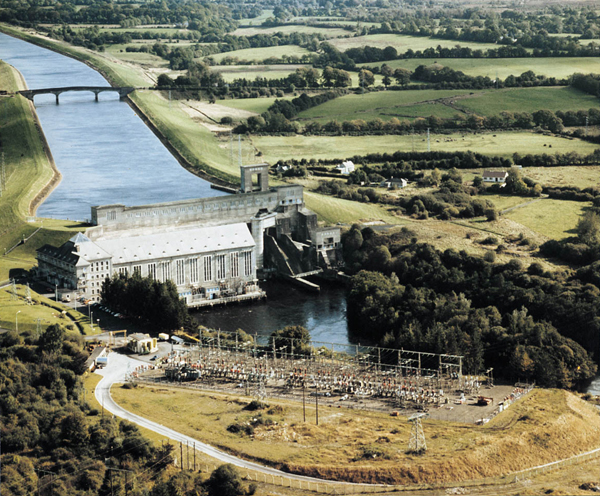
The Ardnacrusha Dam on the River Shannon, Ireland’s largest hydroelectric plant.
Since 1929 the River Shannon in Ireland has been used for hydroelectricity through the Ardnacrusha Dam, leading to significant drops in the river's silver eel population catch size. In 1928 the annual catch of eel from the river was at 65 tonnes, and that number had dropped to 9.6 tonnes by the 1950s due to the harmful dam effects. Responding to the decrease, Ireland's Electricity Supply Board started stocking the river with hatchery produced eels and supplemented these stocks with elvers they trapped from other nearby rivers. The Board also started annual surveys looking at population numbers along various major river fishing sites, and these surveys showed steady improvement to peak numbers in the 1980s. After the 1980s, the amount of elvers able to be collected through natural recruitment started to significantly drop and has been on a downward trend for the past four decades, hitting below scientists' set targets for fishery development and stock conservation. This decline is largely due to a focus on potential economic benefits, not the need for conservation, to support and recover stock enhancement measures.
Studies have also analyzed the relationship of high flows and spills due to the dam on eel migration patterns. It was found that migration rates increase when the water levels reach the point the dam spills over, because the eels are able to escape the Shannon bypass system and instead travel down the original river channel, over the Ardnacrusha generating station. When water levels are higher, as occurs for the dam in the colder months, migration is also higher, so the dam has had a regulatory effect on altering the eel's normal movement in the river, pushing their main migration times back to later in the year around the months of November and December. These changes have reduced the fishing season from its previous six months to now a maximum of three months, cutting the time period during which the local fishing industry can try to make a profit.